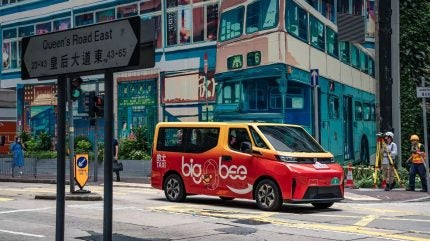
Farizon has unveiled two new variants of its new born-electric SV large van: a large-capacity taxi; and a multi-passenger Combi. Launched at the recent Hong Kong Auto Expo and initially available in the Chinese market only, Farizon says the two new variants highlight the inherent adaptability of the SV’s GXA-M platform.

Discover B2B Marketing That Performs
Combine business intelligence and editorial excellence to reach engaged professionals across 36 leading media platforms.
Farizon has also announced that the first customer for the SV taxi – Big Bee taxi which operates in Hong Kong – has placed an order for 1,000 units. The new seven-seat model has been designed to offer passengers comfort, space and plenty of room for luggage, Farizon says.
While the new Farizon SV taxi and Combi variants are currently available only in the Chinese market, the company says it will ‘continue to assess opportunities for them in other global markets as it progresses its roll-out of the SV panel van in export markets around the world’.
Farizon SV Combi
Designed for fleets and operators who need to transport people and a large amount of kit, the Farizon SV Combi delivers a mix of cargo carrying abilities and space for passengers. It can be configured with five or six seats. An ultra-low platform height of 520mm and the SV’s hidden B-pillar design helps to create a more user-friendly experience for passengers, the company says. Cargo space in L1 variants, with a length of 5 metres, stands at 3.8 m3; the L2 variants, which are 5.5 metres long, offer 5 m3 of space for luggage.

Farizon SV platform
The two new models harness the potential offered by Farizon’s GXA-M platform. This features an ‘innovative use of Cell-to-Pack (CTP-S) battery technology, which connects individual battery cells directly to the battery pack, rather than relying on individual modules’. The result, it is claimed, is body rigidity that is improved by 20% compared to conventional battery module packaging configurations.
Farizon says there is a range of up to 370km for the taxi and 319km for the Combi, and a 20%-80% top-up possible in just 30 minutes.






